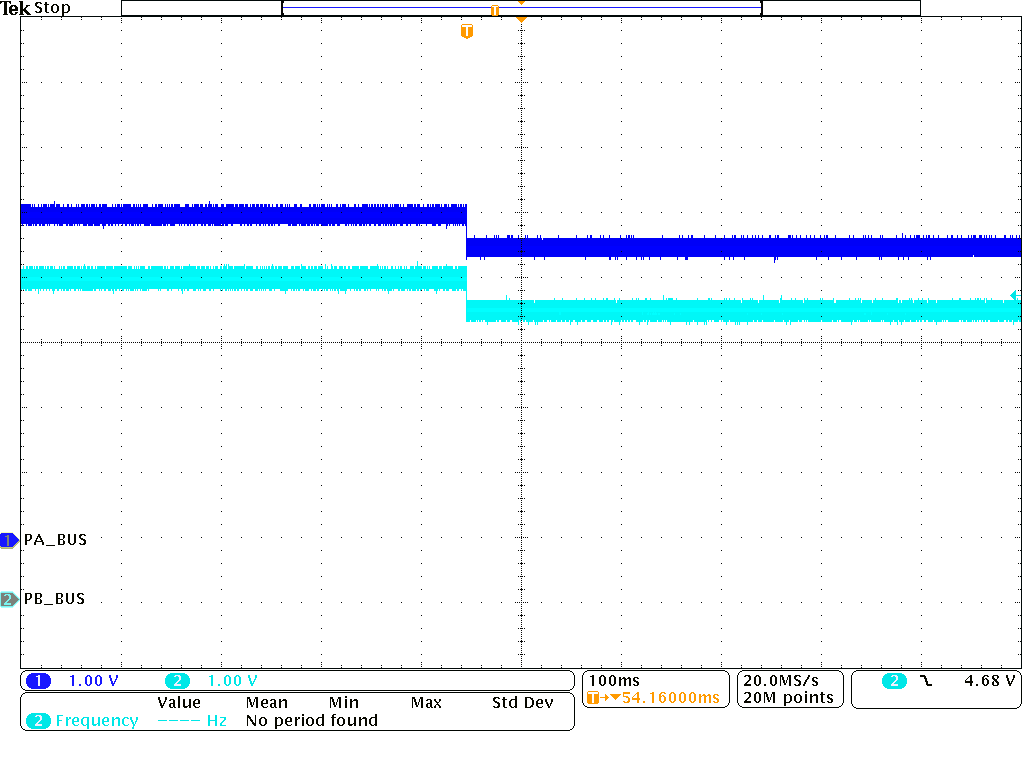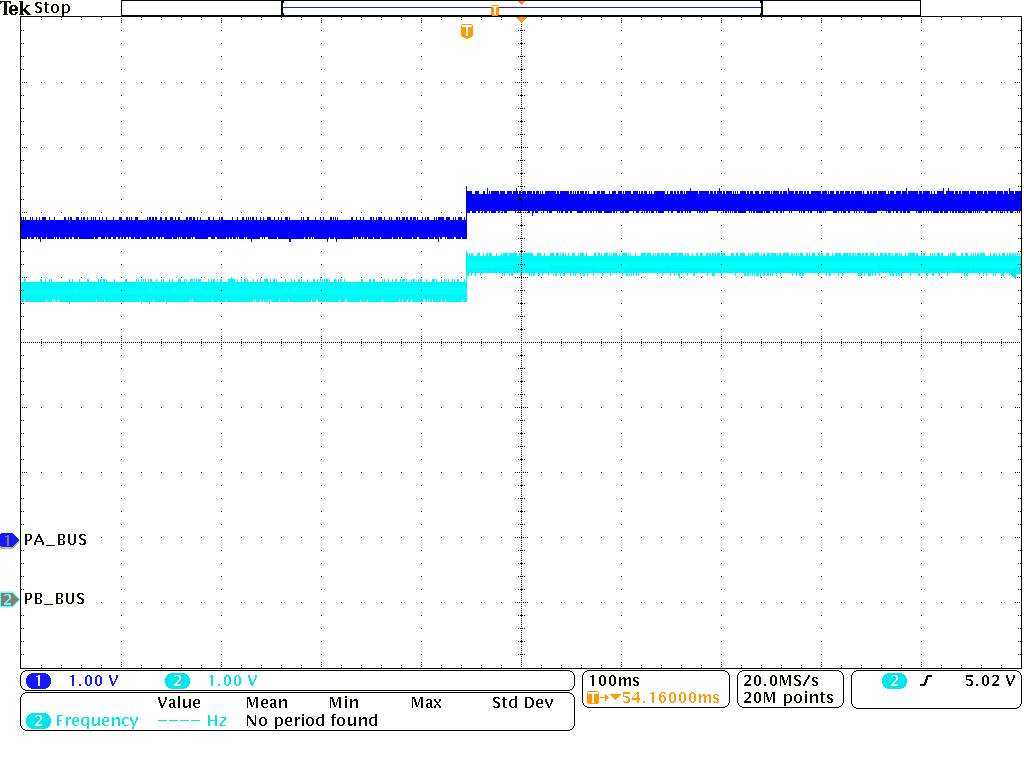TIDT202 September 2020
3.6 Thermal Management
The waveforms of thermal management are shown in following figures. The temperature chamber is used to control the actual chip temperature. The Thermal management function is triggered when the NTC thermistor temperature reaches 110℃ (the chip temperature reaches 132℃) and the output voltage is reduced to 4.77 V. The thermal management function will be turned off when the NTC thermistor temperature drops to 95℃ (the chip temperature drops to 110℃), and the output voltage is recovered to 5.17 V.

| CH1: VPA_BUS | CH2: VPB_BUS |

| CH1: VPA_BUS | CH2: VPB_BUS |